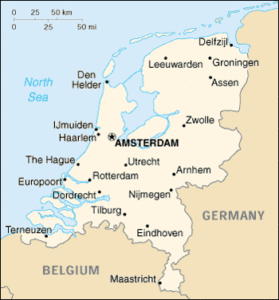 The history of the Jews in the Netherlands is considered to begin largely in the 16th century, when they began to settle in Amsterdam and other cities. The Netherlands was once part of the Spanish Empire but in 1581, the northern Dutch provinces declared independence. Religious tolerance was effectively an important constitutional element of the newly independent state. This inevitably attracted the attention of Jews who were religiously oppressed in different parts of the world. The Portuguese-Spanish Synagogue in Amsterdam, still in use today, held services in Portuguese.
The history of the Jews in the Netherlands is considered to begin largely in the 16th century, when they began to settle in Amsterdam and other cities. The Netherlands was once part of the Spanish Empire but in 1581, the northern Dutch provinces declared independence. Religious tolerance was effectively an important constitutional element of the newly independent state. This inevitably attracted the attention of Jews who were religiously oppressed in different parts of the world. The Portuguese-Spanish Synagogue in Amsterdam, still in use today, held services in Portuguese.
The Jews brought trading expertise and connections as well as navigation knowledge and techniques from Portugal, which enabled the Netherlands to start competing in overseas trade with the Spanish and Portuguese colonies. They maintained foreign trade relationships in the Mediterranean, including Venice, the Levant and Morocco. The Emperor of Morocco had an ambassador at The Hague named Samuel Pallache, through whose mediation, in 1620, a commercial understanding was reached with the Barbary States. The Sephardic Jews of Amsterdam also established trade relationships with other countries in Europe.
 Trade developed between the Dutch and Spanish South America which contributed to establishing the Dutch West Indies Company in 1621. The Amsterdam Esnoga, the synagogue for the Portuguese-Israelite (Sephardic) community was inaugurated 2 August 1675, and is still in use by the Jewish community. The year 1795 brought the results of the French Revolution to the Netherlands, including emancipation for the Jews. The Revolution appreciably ameliorated the condition of the Jews; in 1799 their congregations received, like the Christian congregations, grants from the treasury.
Trade developed between the Dutch and Spanish South America which contributed to establishing the Dutch West Indies Company in 1621. The Amsterdam Esnoga, the synagogue for the Portuguese-Israelite (Sephardic) community was inaugurated 2 August 1675, and is still in use by the Jewish community. The year 1795 brought the results of the French Revolution to the Netherlands, including emancipation for the Jews. The Revolution appreciably ameliorated the condition of the Jews; in 1799 their congregations received, like the Christian congregations, grants from the treasury.
On 30 November 1813, William VI arrived at Scheveningen, and on 11 December he was solemnly crowned as King William I. William VI promulgated a law abolishing the French régime. The Jews prospered in the independent Netherlands throughout the 19th century. By 1900, Amsterdam had 51,000 Jews; The Hague 5,754 Jews, with 846; Rotterdam 10,000, with 1,750; Groningen 2,400, with 613; Arnhem 1,224 with 349. The Netherlands, and Amsterdam in particular, remained a major Jewish population centre until World War II. In the late 19th and early 20th century, the community grew as Jews from the mediene (the country Jews), migrated to larger cities to seek better jobs and living conditions. In 1939, there were some 140,000 Dutch Jews living in the Netherlands, among them some 24,000 to 25,000 German-Jewish refugees who had fled from Germany in the 1930s.
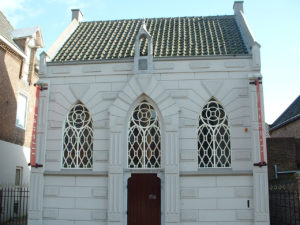 During the first year of the occupation of the Netherlands, Jews, who were already registered on basis of their faith with the authorities (just as Protestants, Catholics and others were), had to get a large “J” stamped in their IDs. Every Dutch resident had to declare whether or not they had Jewish roots. The Germans banned Jews from certain occupations and isolated them from public life. Only the forced removal of Dutch Jews from secondary and higher education incited a response from the public. By 1942, Jews were forced to wear a yellow star on their clothing.
During the first year of the occupation of the Netherlands, Jews, who were already registered on basis of their faith with the authorities (just as Protestants, Catholics and others were), had to get a large “J” stamped in their IDs. Every Dutch resident had to declare whether or not they had Jewish roots. The Germans banned Jews from certain occupations and isolated them from public life. Only the forced removal of Dutch Jews from secondary and higher education incited a response from the public. By 1942, Jews were forced to wear a yellow star on their clothing.
On the eve of Germany’s invasion of the Netherlands, the Esnoga received special historical status from the Dutch government. The status came with funding for renovations to protect the building from fires expected during air raids, including the addition of emergency water pipes and fire escapes. The attic was covered in thick rock wool blankets and the elaborate heichal — Torah ark — was shielded with a protective casing and sandbags.
Although Leo Palache was only 14 when the German occupation began, he helped dissuade the Nazis from turning the “Esnoga” – synagogue in Portuguese – into a Jewish deportation centre. The adolescent also guarded the complex until 1944, when he and other volunteer firefighters concealed ritual items between the sanctuary ceiling and attic floor. Volunteer firefighter Leo Palache, son of the congregation’s leader declared the synagogue would be “very unsuitable” as a deportation centre as the building had no electricity. And even if the sanctuary had lights, explained the 16-year-old to the Nazi functionary, the many large windows were not easily covered for air raid blackouts. Between the end of 1943 and February 2, 1944, Leo Palache and the other firefighters were deported, but not before they stashed the remaining congregational treasures and membership lists between the sanctuary ceiling and attic floor.
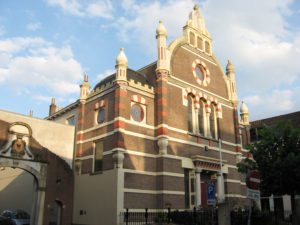 The Germans were able to make wide use of misinformation and deception when the deportations were carried out in the Netherlands. For example, they issued tens of thousands of provisional exceptions which were later rescinded one by one. From January 1942 more and more Jewish men were sent to labour camps in the Netherlands. After the start of the deportations in July, the impression was initially that they did not have to go to Poland because they had already been put to work in the Netherlands. But at the beginning of October 1942, these men were rounded up along with with their families, altogether more than 12,000 people at one fell swoop, and were almost all transported to Auschwitz in that month. The same applied for Jewish hospitals, orphanages and homes for the elderly: they were deliberately left alone by the German police for months on end, so many people thought they were safe there for the time being. However, from January 1943, they were emptied one after the other. The occupying authorities transported the Jews as unobtrusively as possible, using misinformation and deceit.
The Germans were able to make wide use of misinformation and deception when the deportations were carried out in the Netherlands. For example, they issued tens of thousands of provisional exceptions which were later rescinded one by one. From January 1942 more and more Jewish men were sent to labour camps in the Netherlands. After the start of the deportations in July, the impression was initially that they did not have to go to Poland because they had already been put to work in the Netherlands. But at the beginning of October 1942, these men were rounded up along with with their families, altogether more than 12,000 people at one fell swoop, and were almost all transported to Auschwitz in that month. The same applied for Jewish hospitals, orphanages and homes for the elderly: they were deliberately left alone by the German police for months on end, so many people thought they were safe there for the time being. However, from January 1943, they were emptied one after the other. The occupying authorities transported the Jews as unobtrusively as possible, using misinformation and deceit.
After the Germans invaded the Netherlands in May 1940, a fund was established to help families of those, who were stranded abroad when war broke out. Van Hall was asked to help set up the Amsterdam chapter together with his brother Gijs. Because of his banking experience, van Hall was able to provide funding with the help of guarantees by the Dutch government in London. Soon thereafter, the Germans began taking anti-Jewish and forced labour measures, and resistance against these measures increased. Van Hall expanded his fund-raising activities for all kinds of resistance groups, and he became known as the banker to the resistance.
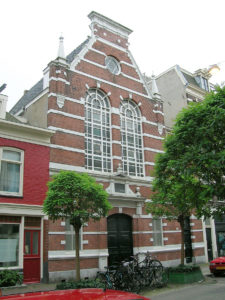 One of the ways in which van Hall raised funds for the resistance was the “robbing” of De Nederlandsche Bank (Dutch National Bank). With the approval of the Dutch government-in-exile, the van Halls managed to obtain as much as 50 million Dutch guilders. Together with his brother, van Hall falsified bank bonds and exchanged them in the bank for the real bonds. With these, paper money was collected. This was done behind the back of Rost van Tonningen, president of the bank and a notorious member of the Dutch Nazi party National Socialist Movement in the Netherlands (NSB).
One of the ways in which van Hall raised funds for the resistance was the “robbing” of De Nederlandsche Bank (Dutch National Bank). With the approval of the Dutch government-in-exile, the van Halls managed to obtain as much as 50 million Dutch guilders. Together with his brother, van Hall falsified bank bonds and exchanged them in the bank for the real bonds. With these, paper money was collected. This was done behind the back of Rost van Tonningen, president of the bank and a notorious member of the Dutch Nazi party National Socialist Movement in the Netherlands (NSB).
Deportations of Jews from the Netherlands to German-occupied Poland and Germany began on 15 June 1942 and ended on 13 September 1944. Ultimately some 101,000 Jews were deported in 98 transports from Westerbork to Auschwitz (57,800; 65 transports), Sobibor (34,313; 19 transports), Bergen-Belsen (3,724; 8 transports) and Theresienstadt (4,466; 6 transports), where most of them were murdered. Another 6,000 Jews were deported from other locations (like Vught) in the Netherlands to concentration camps in Germany, Poland and Austria (like Mauthausen). The geography of the Netherlands made it impossible for Jews to flee. The country of Holland is less than 20,000 square miles of flatlands. During the civil occupation, it is estimated that 25,000 Jews in the Netherlands went into hiding. Of these 25,000, a third were caught and deported. Of those who survived, 4,000 were little children.
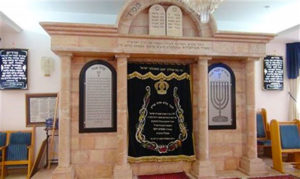 One town, however, ended the war with more Jews than it had before the Holocaust. The Jewish population of Limburg was 800 in 1933, but grew to 2,200 by 1945 as a result of an influx of German refugees before the war and Dutch trying to escape the Nazis following the German invasion. In 1942, when Jews began to be rounded up in Limburg, Jews were usually given 24 hours warning, which allowed many to go into hiding. Approximately 10 percent of Jews who hid in Limburg were caught, but a far higher percentage of Jews in Limburg survived the war than anywhere else in the Netherlands.
One town, however, ended the war with more Jews than it had before the Holocaust. The Jewish population of Limburg was 800 in 1933, but grew to 2,200 by 1945 as a result of an influx of German refugees before the war and Dutch trying to escape the Nazis following the German invasion. In 1942, when Jews began to be rounded up in Limburg, Jews were usually given 24 hours warning, which allowed many to go into hiding. Approximately 10 percent of Jews who hid in Limburg were caught, but a far higher percentage of Jews in Limburg survived the war than anywhere else in the Netherlands.
Because it was such a small town, everyone knew if someone were to betray the Jews so it carried different social implications in Amsterdam. Also, unlike other parts of the Netherlands, it was possible to escape to Belgium through limestone caves that led across the border. An estimated 3,000 Jews went through Limburg on their way to Spain and Switzerland.
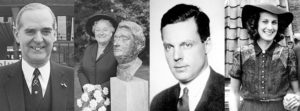
Some of the people who helped the Jews during the holocaust include: Frits Philips, Geertruida Wijsmuller-Meijer, Jan Zwartendijk, Tina Strobos, and the village of Nieuwlande.
Frederik Jacques “Frits” Philips was the fourth chairman of the board of directors of the Dutch electronics company Philips, which his uncle and father founded. During the Occupation, Philips saved the lives of 382 Jews by convincing the Nazis that they were indispensable for the production process at Philips.
Geertruida Wijsmuller-Meijer was a Dutch resistance fighter who brought Jewish children and adults into safety before and during the Second World War. Geertruida Wijsmuller-Meijer persuaded Adolf Eichmann to allow her to deport several hundred Jewish children out of Germany. The children were sent to safety in England and ‘Auntie Truus’, as the children knew her, thereafter became one of the key players in the Kindertransport movement, helping to move around 10,000 Jewish children to safety before 1940.
Jan Zwartendijk was a Dutch businessman and diplomat. As director of the Philips plants in Lithuania and part-time acting consul of the Dutch government-in-exile, he supervised the writing of 2,345 visas for Curaçao to save Jews from the Holocaust during World War II.
 Tina Strobos, née Tineke Buchter, was a Dutch physician and psychiatrist from Amsterdam, known for her resistance work during World War II. While a young medical student, she worked with her mother and grandmother to rescue more than 100 Jewish refugees as part of the Dutch resistance during the Nazi occupation of the Netherlands. Strobos provided her house as a hiding place for Jews on the run, using a secret attic compartment and warning bell system to keep them safe from sudden police raids. In addition, Strobos smuggled guns and radios for the resistance and forged passports to help refugees escape the country.
Tina Strobos, née Tineke Buchter, was a Dutch physician and psychiatrist from Amsterdam, known for her resistance work during World War II. While a young medical student, she worked with her mother and grandmother to rescue more than 100 Jewish refugees as part of the Dutch resistance during the Nazi occupation of the Netherlands. Strobos provided her house as a hiding place for Jews on the run, using a secret attic compartment and warning bell system to keep them safe from sudden police raids. In addition, Strobos smuggled guns and radios for the resistance and forged passports to help refugees escape the country.
Nieuwlande is famous for its collective sheltering of Jews in 1942 and 1943, during the Holocaust. The villagers resolved that every household would hide one Jewish family or at least one Jew.
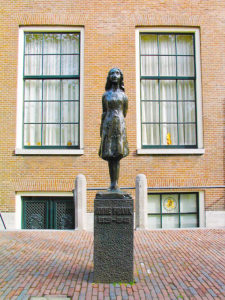 In 1945, only about 35,000 Jews of the Netherlands were alive. The Dutch underground hid an estimated number of Jews of some 25,000–30,000; eventually, an estimated 16,500 Jews managed to survive the war by hiding. Some 7,000 to 8,000 survived by fleeing to countries like Spain, the United Kingdom, and Switzerland, or by being married to non-Jews (which saved them from deportation and possible death). The population had decreased by several thousand by the mid-1950s, due to emigration and a low birthrate. In fact, the emigration from the Netherlands to Palestine, and later to Israel, surpassed that of any other Western European country.
In 1945, only about 35,000 Jews of the Netherlands were alive. The Dutch underground hid an estimated number of Jews of some 25,000–30,000; eventually, an estimated 16,500 Jews managed to survive the war by hiding. Some 7,000 to 8,000 survived by fleeing to countries like Spain, the United Kingdom, and Switzerland, or by being married to non-Jews (which saved them from deportation and possible death). The population had decreased by several thousand by the mid-1950s, due to emigration and a low birthrate. In fact, the emigration from the Netherlands to Palestine, and later to Israel, surpassed that of any other Western European country.
Since the late 20th century, a number of mostly Israeli and Russian Jews have immigrated to the Netherlands, the latter after the Soviet Union eased emigration and after its dissolution. Approximately one in three Dutch Jews was born elsewhere. The number of Israeli Jews living in the Netherlands (concentrated in Amsterdam) runs in the thousands (estimates run from 5,000 to 7,000 Israeli expatriates in the Netherlands, although some claims go as high as 12,000). A relatively small number of these Israeli Jews is connected to one of the religious Jewish institutions in the Netherlands. In the 21st century, some 10,000 Dutch Jews have emigrated to Israel. To the present day, the number of Jews in Amsterdam has held steady at between 25,000 and 30,000. While the total numbers have remained constant, however, levels of observance have increased.